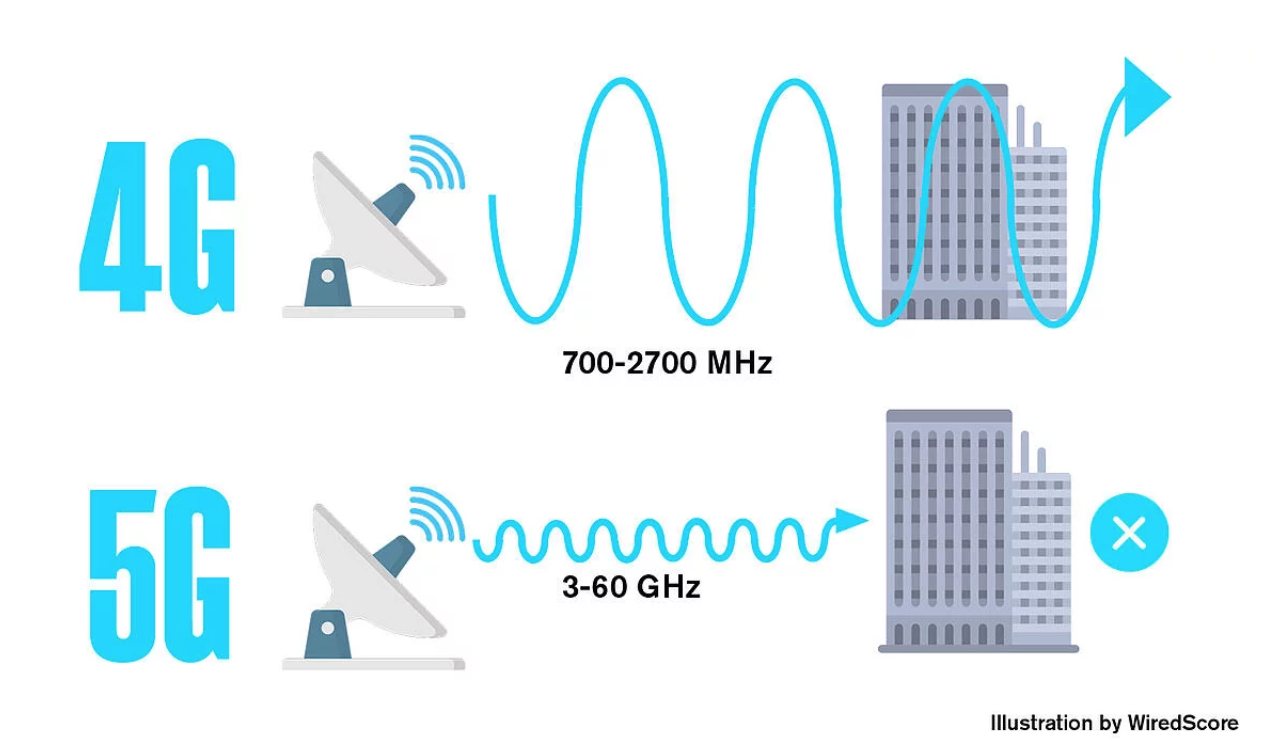With the imminent and hotly anticipated rollout of 5G NR (Fifth Generation New Radio) around the world, 4G (Fourth Generation) cellular technology is slowly but surely being phased out as it reaches its technical limits on the amount of data that can be transferred across blocks of spectrum. 5G not only aims to surpass the network capabilities but meet and exceed 4G’s goals for general speeds, latency, and density.
There has always been a limit to how much information radio waves can carry on a frequency band. With each “generation” of mobile technology, there has been an improvement on how mobile networks operate and transmit information. If that limit is reached, in order for someone to achieve a better data speed, someone else’s data speed would be reduced. 5G technology increases bandwidth capability and therefore increases the amount of "space" there is for more devices to operate at higher data speeds. This allows for more users to connect at once with less congestion and allows for data to be sent and received quicker. This is an important innovation as data traffic grows at 60% per year with more people streaming video and using connected services.
Currently, 4G LTE (Long Term Evolution) technology is capable of using lower latency bands and operating up to 6GHz. 5G mmWave will be able to handle traffic anywhere between 26GHz and 800Ghz.
Measuring 5G and 4G EMF Exposure
The rollout of 5G has been faster in countries like South Korea, the United States of America and China. Due to Australia’s size, significant infrastructure investments are required in order for 5G technology to be rolled out firstly in major Australian cities first, then slowly into regional communities. This is why it will take more than 10 years for 4G to be completely replaced in Australia. Until then, 4G and 5G will exist simultaneously.
There have been concerns over the risks to health and well-being from radiofrequency electromagnetic radiation (EMF-RF), particularly after 5G was introduced. 5G operates on three sets of frequencies, also called bands:
- low-band 5G frequency operates below 1GHz
- mid-band 5G frequency up to 6GHz and
- high band 5G frequency will use 24GHz or higher.
Most people are concerned about the high band 5G frequency which uses millimetre waves as nothing above 5GHz has been used in mass communication before. It is important to note as electromagnetic frequencies get higher, their wavelength gets shorter. 5G millimetre waves are a lot shorter than the wavelength 4G uses. With a shorter wavelength, 5G can carry a lot more data compared to 4G and at a faster speed. But it also has a much shorter range. 5G wavelengths have a range of about 1000ft whereas 4G wavelengths can have a range upto 15kms.

Telstra Australia conducted several extensive trials and surveys of their 5G NR network infrastructure in real-world setting to test electromagnetic energy (EME) levels. The tests used specialised testing equipment such as the new Narda 5G FR2 Antennas with the SRM-30006 Selective Radiation Meter.
Watch our Webinar with Mike Wood from Telstra as he trials Telstra’s mmWave Small Cell at a Smart Apartment in Melbourne using the new NARDA mmWave 5G FR2 Antennas.
Telstra has found 5G EME levels to be very low and like those of 3G, 4G and Wi-Fi. In many cases, the maximum levels of EME are 1000 times below the safety limits.